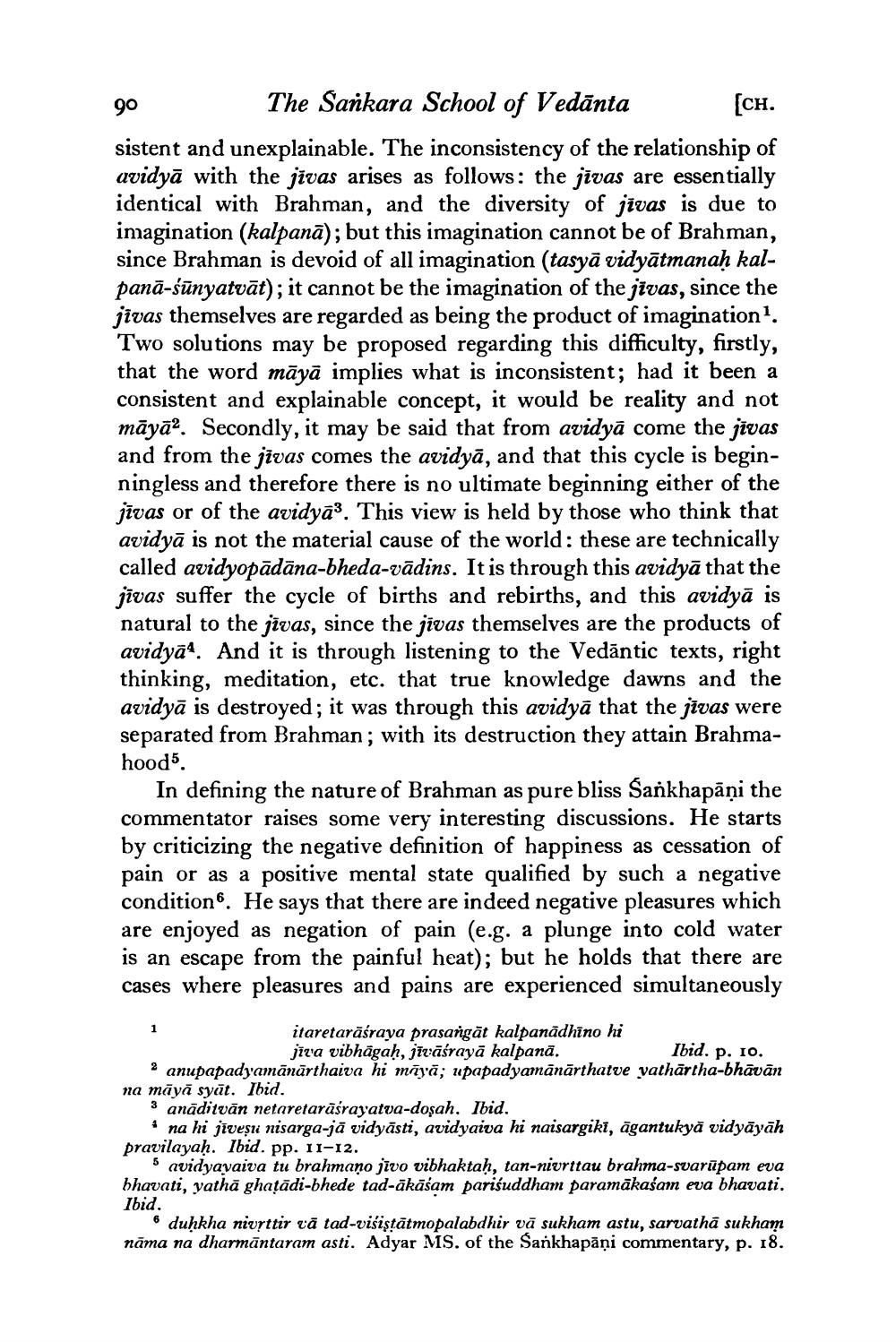________________
90
The Sankara School of Vedānta [CH. sistent and unexplainable. The inconsistency of the relationship of avidyā with the jivas arises as follows: the jīvas are essentially identical with Brahman, and the diversity of jīvas is due to imagination (kalpanā); but this imagination cannot be of Brahman, since Brahman is devoid of all imagination (tasyā vidyātmanaḥ kalpanā-sūnyatvāt); it cannot be the imagination of the jivas, since the jīvas themselves are regarded as being the product of imagination. Two solutions may be proposed regarding this difficulty, firstly, that the word māyā implies what is inconsistent; had it been a consistent and explainable concept, it would be reality and not māyā. Secondly, it may be said that from avidyā come the jīvas and from the jivas comes the avidyā, and that this cycle is beginningless and therefore there is no ultimate beginning either of the jīvas or of the avidyās. This view is held by those who think that avidyā is not the material cause of the world: these are technically called avidyopādāna-bheda-vādins. It is through this avidyā that the jīvas suffer the cycle of births and rebirths, and this avidyā is natural to the jīvas, since the jīvas themselves are the products of avidyā4. And it is through listening to the Vedāntic texts, right thinking, meditation, etc. that true knowledge dawns and the avidyā is destroyed; it was through this avidyā that the jīvas were separated from Brahman; with its destruction they attain Brahmahood5.
In defining the nature of Brahman as pure bliss Sankhapāņi the commentator raises some very interesting discussions. He starts by criticizing the negative definition of happiness as cessation of pain or as a positive mental state qualified by such a negative condition6. He says that there are indeed negative pleasures which are enjoyed as negation of pain (e.g. a plunge into cold water is an escape from the painful heat); but he holds that there are cases where pleasures and pains are experienced simultaneously
itaretarāśraya prasangāt kalpanādhino hi jīta vibhāgaḥ, jīvāśrayā kalpanā.
Ibid. p. 1o. 2 anupapadyamānārthaiva hi mīyā; upapadyamanārthatve vathartha-bhāvān na māyā syāt. Ibid.
3 anāditvān netaretarāsrayatva-dosah. Ibid.
* na hi jiveșu nisarga-jā vidyāsti, avidyaiva hi naisargiki, āgantukyā vidyāyāh pravilayah. Ibid. pp. 11-12.
5 avidyayaiva tu brahmamo jīvo vibhaktaḥ, tan-niurttau brahma-svarūpam eva bhavati, yathā ghatādi-bhede tad-ākāśam parisuddham paramākaśam eva bhavati. Ibid.
6 duhkha niurttir vā tad-visistātmopalabdhir vā sukham astu, sarvathā sukham nāma na dharmāntaram asti. Adyar MS. of the Sankhapāņi commentary, p. 18.




